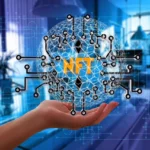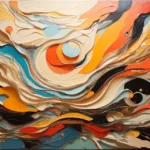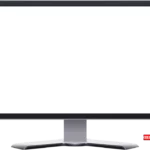The art world is undergoing a seismic shift in the digital age. Once a revolutionary tool for connectivity and exposure, the internet now poses opportunities and challenges for artists. On one hand, the rise of digital platforms and AI technology can expand an artist’s reach and streamline creation. On the other hand, these same advancements threaten traditional revenue streams and saturate the market.
The debate over whether the internet is ruining or revolutionizing artists’ livelihoods is more relevant than ever…
The art market has evolved rapidly, with digital tools playing a pivotal role. While some argue these advancements democratize art, making it more accessible to creators and audiences, others contend they undermine the value of original work, leading to financial instability for artists.
The Internet as an Artistic Ally
For many artists, the internet has opened previously inaccessible doors. Digital platforms provide a global stage, allowing artists to showcase their work to a vast audience without the need for gallery representation. This democratization of art means that anyone with an internet connection can potentially reach millions of viewers. For emerging artists, this can translate into opportunities that were once the preserve of the well-connected few.
Moreover, the Internet facilitates direct sales, enabling artists to bypass traditional gatekeepers like galleries and agents. Platforms such as Etsy, Redbubble, and Patreon allow artists to sell their work directly to consumers, keeping a larger share of the profits. This has also led to niche markets, where artists can find and cultivate a dedicated audience for their unique styles.
The Internet is also a powerful tool for learning and collaboration. Artists can access many resources, from tutorials and webinars to forums and social media groups, to share ideas and feedback. This can enhance their skills and inspire innovation, fostering community among artists worldwide.
The Internet as an Artistic Adversary
Despite these advantages, the internet poses significant challenges to artists. One major issue is the saturation of the market. With so many artists vying for attention online, standing out becomes increasingly difficult. This oversupply can drive down prices, making it harder for artists to earn a sustainable income.
The rise of AI-generated art is another concern. AI tools can create artworks in seconds, challenging the notion of creativity and originality. While some see AI as a tool enhancing creativity, others fear it could devalue human-made art as AI-generated pieces flood the market. This raises questions about copyright and ownership as artists grapple with the implications of technology that can mimic their work.

The internet has also altered consumer expectations. With cheap or free digital art availability, some consumers may undervalue the time and effort required to create original pieces. This shift in perception can lead to difficulties in pricing artwork appropriately, making it challenging for artists to maintain financial stability. This is very evident in logo creation.
Navigating the Digital Landscape
Artists today must navigate a complex digital landscape, balancing the opportunities and challenges the internet presents. To succeed, they need to adapt and innovate, leveraging digital tools while maintaining the integrity of their work. Building a personal brand and engaging with audiences online are crucial strategies for standing out in a crowded market.
Community support is also vital. Networks of artists can offer support and collaboration opportunities, helping individuals feel less isolated in their creative endeavors. By banding together, artists can advocate for fair compensation and push back against the devaluation of art in the digital age.
The role of education cannot be overlooked. As the internet continues to evolve, artists must stay informed about new technologies and market trends. This knowledge can empower them to make informed career decisions and safeguard their livelihoods.
The Road Ahead for Artists
The impact of the internet on artists’ livelihoods is a complex issue with no easy answers. While digital tools provide unprecedented opportunities for exposure and sales, they also present challenges threatening traditional revenue streams and the value of original art. As the art world adapts to these changes, artists must remain flexible and resourceful.
Ultimately, the internet is neither a complete boon nor a bane for artists. Depending on how it is used, it can either enhance or hinder an artist’s career. By embracing the benefits and mitigating the drawbacks, artists can navigate this new landscape and thrive in their creative pursuits.
The future of art in the digital age is still unfolding, and artists are at the forefront of this evolution. As they adapt to the changing landscape, they will shape the role of art in society and redefine what it means to be an artist in the 21st century.
Embracing Innovation in Artistic Practice
As artists grapple with the internet’s dual nature, many find innovative ways to incorporate technology into their practice. Some artists use digital tools not just as a means of distribution but as an integral part of their creative process. Digital painting apps, 3D modeling software, and virtual reality platforms are expanding the boundaries of art, offering new mediums for expression and experimentation.
For example, artists like Krista Kim and Beeple have gained recognition for their work with digital art and NFTs (non-fungible tokens), which utilize blockchain technology to authenticate and sell art in the digital realm. This emerging market has created a new revenue stream for digital artists, allowing them to monetize their work in previously impossible ways. However, artists must also stay abreast of technological advancements and market dynamics.
The Role of Art Institutions and Policymakers
Art institutions and policymakers are crucial in supporting artists navigating the digital landscape. Galleries and museums are increasingly incorporating digital art into their collections and exhibitions, recognizing the importance of this medium in contemporary art. By doing so, they validate digital art as a legitimate expression and provide artists with platforms to reach broader audiences.
Policymakers can also contribute by implementing measures to protect artists’ rights in the digital realm. This includes developing clear copyright and intellectual property guidelines to prevent the unauthorized use of artists’ work. Additionally, support for digital literacy programs can equip artists with the skills to thrive online.
Community and Collaboration in the Digital Era
Community and collaboration have become more critical than ever for artists. Online platforms and social media have made it easier for artists to connect with peers, share their work, and collaborate on projects across geographical boundaries. These connections can lead to innovative collaborations that push the boundaries of traditional art forms and create new opportunities for artists.
Collaborative projects, such as virtual exhibitions and cross-disciplinary partnerships, have the potential to reach diverse audiences and explore new artistic possibilities. When working together, artists can amplify their voices and advocate for the value of art in a rapidly changing world.
The Ongoing Dialogue
The intersection of art and the internet is an ongoing dialogue that continues to evolve. As artists explore the potential and pitfalls of the digital age, they are redefining their roles and the impact of their work. The challenges are real, but so are the opportunities for growth and innovation.
Artists who embrace change and remain open to new technologies will likely find ways to thrive, even as the landscape shifts. By fostering community, advocating for their rights, and continuously learning, artists can ensure their voices and creations remain vital and valued in the digital era. The future of art is being written today, and artists are at the forefront of that narrative, shaping a world where creativity knows no bounds.

Jim Smith is a passionate writer who explores the intersections of arts, design, and technology, with a special focus on education, freelancing, and the evolving world of UX design. His work delves into creative trends, skill-building, and the future of digital innovation, inspiring readers to embrace growth and creativity in the modern era.








